#victoria catlin
Photo


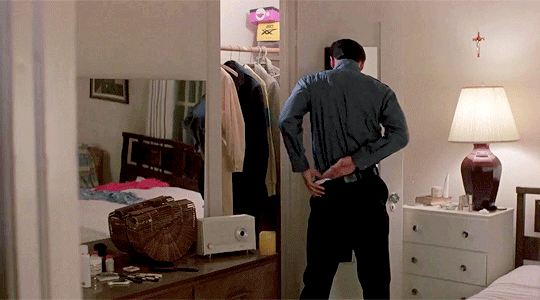



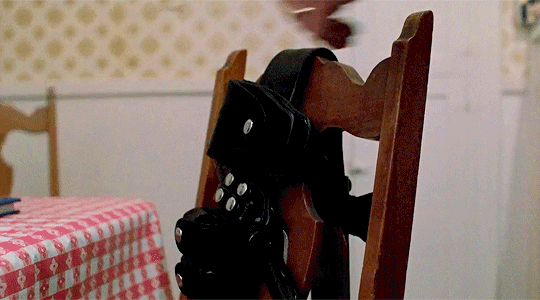



Sometimes you wake up... screaming like you can’t breathe. Sometimes I get afraid that you might hurt me in your sleep.
Have I ever hurt you?
Maniac Cop (1988), dir. William Lustig
#maniac cop#bruce campbell#jack forrest#victoria catlin#filmedit#my gifs#my edit#look this scene is SO !!!!#like just the way he is introduced <3
106 notes
·
View notes
Photo

#twin peaks#blackie o'reilly#victoria catlin#one eyed jacks#vhs#gif#1990#lingerie#90s babes#brothel#madam
135 notes
·
View notes
Text

Bad movie I have Maniac Cop 1988
#Maniac Cop#Tom Atkins#Bruce Campbell#Laurene Landon#Richard Roundtree#William Smith#Robert Z'Dar#Sheree North#Nina Arvesen#Nick Barbaro#Lou Bonacki#Barry Brenner#Victoria Catlin#James Dixon#Corey Michael Eubanks#Jill Gatsby#Rocky Giordani#John F. Goff#William J. Gorman#Jon Greene#Teddy M. Haggarty#Dan Hicks#Erik Holland#Dennis Junt#Marcia Karr#Judy Kerr#Jake LaMotta#Judy Levitt#Jason Lustig#William Lustig
6 notes
·
View notes
Text


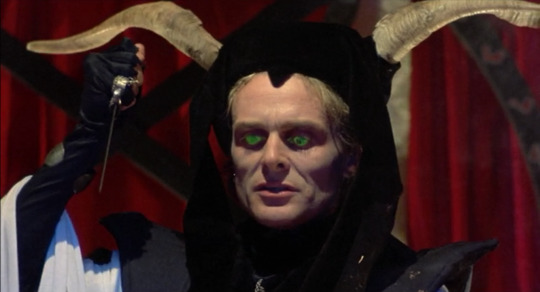
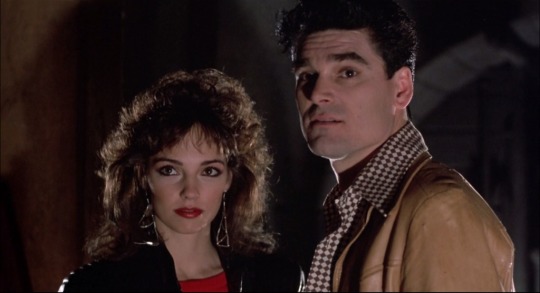



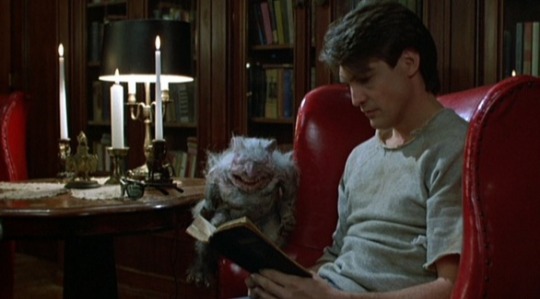
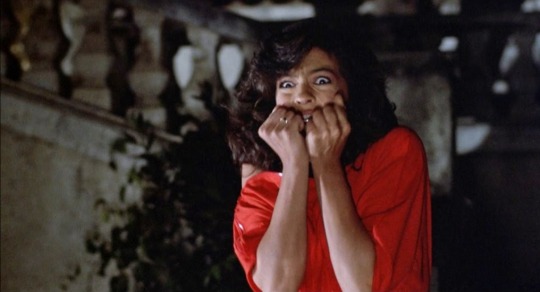

Ghoulies (1985)
"I think I busted my head."
"Oh, thank god, I thought that you really hurt yourself."
#ghoulies#1985#horror imagery tw#american cinema#comedy horror film#luca bercovici#jefery levy#peter liapis#lisa pelikan#michael des barres#jack nance#peter risch#tamara de treaux#scott thomson#ralph seymour#mariska hargitay#keith joe dick#david dayan#victoria catlin#charene cathleen#bobbie bresee#richard band#oh Ghoulies. made on a shoestring by Charles Band with his newly formed Empire Pictures‚ this was an inexplicable hit and made a metric#shit ton of money (freeing Band up to make some of the best and worst horror films of the late 80s and 90s). in production at the same time#as Gremlins (Dante sued‚ ig bc the names were similar?? he lost‚ rightfully) but production stalled when Band simply ran out of money and#so Gremlins beat it to release. went on to make a mint in the home video market‚ spawned three sequels and was arguably a major#factor in the existence of full moon productions... if only it were a better film. i mean it's fine. it's kind of fun kind of dumb very#crude and more than a little camp. but mostly I'm sad to say it's forgettable. some little creatures do some mischief and there's black#magic and then it's all resolved. for such a landmark in 80s indie horror movie history i wish this could have been about 20% better
8 notes
·
View notes
Photo

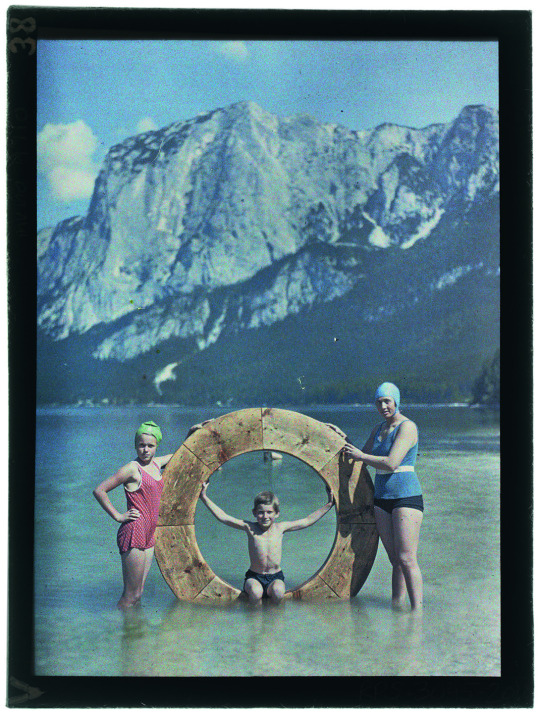





"Color! What a deep and mysterious language, the language of dreams.” – Paul Gauguin
The yearning to capture the world in color has always been with us. Whether it was painting on walls in caves, crafting vegetable dyes for textiles, the development of oil paints, to experimenting with chemistry in photographic processes--the allure of color has motivated artists to represent the world as they experience it.
The autochrome, an ephemeral photographic process patented in 1903 by the Lumière brothers, released commercially in 1907, and produced until the mid-1930′s, changed the possibilities of photography. Over a hundred years ago, what was once only available in monochrome, became possible for photographers--without great technical skill or a different camera--to capture the world in color as they saw it. During the brief 30-year history of the Lumière manufactured glass plates, photographers produced hundreds of thousands of autochromes. However, because of their inherent fragility and sensitivity to light, autochromes would later be supplanted by other more practical photographic processes, particularly the rise of Kodachrome in 1935. Alas, the autochrome would fade to memory.
Drawing on the resources of the Victoria & Albert Museum in London, which houses one of the most extensive collections of autochromes, Color Mania: Photographing the World in Autochrome by Catlin Langford is a scholarly and considered reminder of our yearning for color. This new publication from Thames & Hudson reveals work that has never been shown, and helps us to understand the significance of autochromes in our shared photographic history.
To see the early 20th century in color is to see the world anew. The work of long forgotten photographic pioneers like Helen Messinger Murdoch, who was the first woman to travel the world taking autochromes, is included in the book. Her travel pictures from the early 1900′s remind us how modern autochromes can seem. We magically and immediately experience the past in color. The lush, painterly, pointillism look of the autochrome is unique. And like a language we have not heard in a long time, the images in Color Mania remind us how deep and mysterious that language can be. --Lane Nevares
#autochrome#color photography#photography#color mania#history of photography#Thames & Hudson#victoria and albert museum
21 notes
·
View notes
Text
Depresión y ciclismo - Una realidad cada vez más común
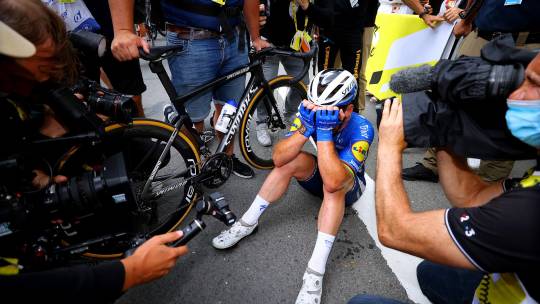
Son muchos los deportistas de élite que dedican o dedicaron su vida entera al deporte. ¿Qué sucede cuando los profesionales abandonan el deporte? A continuación en Merkabici hablaremos de un tabú bastante común en el deporte del que muchos deportistas no se atreven a hablar o mencionar en público.
La depresión en el ciclismo es algo bastante común, durante y después de la practica de este hermoso deporte. ¿Qué pasa cuándo abandonas el deporte, y comienzas con la búsqueda de uno mismo? Cuando empieza la búsqueda exhaustiva de ¿Quién eres? ¿Qué quiero? y ¿A donde voy?
Cuando abandonas el ciclismo, ya no eres aquel sprinter favorito, escalador, o gregario al que todos aplaudían durante las carreras ciclistas, te das cuenta que el mundo ha avanzado sin ti, mientras te encontrabas en una burbuja y la nueva realidad puede ser demasiado dura para muchos.
Los ciclistas profesionales entrenan durante años para lograr un objetivo, muchos comienzan desde pequeños, a menudo haciendo una gran cantidad de sacrificios personales para perseguir sus más grandes sueños de gloria, para estar en lo más alto del pódium. El precio a pagar por estar en lo más alto, es un precio muy costoso que puede dejar secuelas para toda la vida.
Para muchos deportistas, la jubilación es un concepto en el que no desean pensar con gran detalle. Sin embargo, ya sea que hayan alcanzado la gloria olímpica o no hayan alcanzado la cima en su deporte al que habían aspirado, la carrera de todos los atletas eventualmente llegará a su fin, ya sea por edad, lesión o agotamiento.
A continuación hablaremos de la depresión dentro del ciclismo, las principales causas y por último hablaremos de la principal solución a un problema tan complejo como la depresión.
Depresión y ciclismo
Sufrir en los pedales mientras el placer y el dolor se entrelazan es una noción con la que muchos ciclistas pueden identificarse a menudo. Sin embargo, cuando el dolor se vuelve lo suficientemente abrumador como para seguir adelante, las alarmas deberían sonar y es tiempo de enfocarse a uno mismo.
Son muchas las historias de depresión y suicidio dentro del ciclismo profesional y también dentro del deporte de élite las que han conmocionado a la audiencia una y otra vez, lo que ha llevado a preguntas sobre el grado de presión que se ejerce sobre los deportistas más talentosos del mundo.
La ex ciclista de pista Victoria Pendleton reveló en una entrevista que había "acumulado 1,5 veces la dosis de medicamentos" necesaria para suicidarse. Kelly Catlin, de 23 años también campeona mundial decidió quitarse la vida después de mostrar un impulso casi inigualable en búsqueda de la excelencia en todo lo que hizo.
Kelly no solo fue una excelente ciclista, también tocaba el violín con fluidez y hablaba en varios idiomas. "Andy Sparks" entrenador de Kelly, la describía como: "la ciclista perfecta que ponía a los demás primero".
Los atletas profesionales no somos inmunes a la depresión y ansiedad, el camino que hay que recorrer hacía el éxito a menudo esta plagado de confusión emocional, presión por parte del equipo, patrocinadores. Además de los estereotipos impuestos por la sociedad, en donde se visualiza al atleta como: "un ser invencible, incapaz de mostrar signos de debilidad".|
La vida después del deporte
Victoria Pendleton, expresó su gran alivio por la jubilación después de los Juegos Olímpicos de Londres, citando que no podía esperar para emprender nuevas aventuras en su vida y estaba mucho más feliz ahora que la presión de competir ya no era un problema. Meses después en una entrevista reveló que había "acumulado 1,5 veces la dosis de drogas" necesaria para suicidarse.
La terminación de la carrera deportiva induce cambios drásticos en la personalidad, vidas sociales y ocupacionales, esto a su vez puede afectar potencialmente a los individuos cognitiva, emocional y conductualmente.
Un claro ejemplo, son los problemas que ha enfrentado Jan Ullrich, el ex campeón alemán quién se encuentra en rehabilitación en un hospital psiquiátrico en Frankfurt, después de sufrir problemas de drogadicción y alcoholismo.
Es genial pasar el día con este hombre. Como muchos de ustedes saben, aprecio a Jan Ulrich. Era un rival tan especial para mí. Me asustó, me motivó y realmente sacó lo mejor de mí. Pura clase en la bicicleta. Avance rápido hasta hoy y mi amigo está pasando por una mala racha. No podía dejar pasar la oportunidad de venir a Alemania para pasar unos días con él. Por favor, mantenga a Jan en todos sus pensamientos y oraciones. Necesita nuestro apoyo ahora mismo.
La transición que hacen los deportistas profesionales de una carrera deportiva a tiempo completo a la de la jubilación ha recibido considerables comentarios en los medios deportivos, sin embargo, sólo en los últimos años ha merecido un estudio académico formal.
En un estudio publicado por el Journal Psychology of Sport and Excersice, afirmaron que la transición a menudo resulta difícil debido al cese repentino de las demandas intensas del rendimiento atlético de élite, agravado por la pérdida repentina de la devoción intensa del atleta por la competencia atlética profesional y sus recompensas concomitantes.
Sin embargo, para algunos, la depresión se vuelve demasiado abarcadora y, a lo largo de los años, ha habido una serie de casos de atletas que se suicidan después de retirarse del deporte profesional. Esto incluye la impactante historia de la judoca rusa Elena Ivashchenko, quien se cree que se suicidó luego de una depresión provocada por su incapacidad para ganar el oro en los juegos Olímpicos de Londres 2012.
Principales causas por las cuales los atletas tienen problemas de salud mental
¿Qué es exactamente lo que a menudo lleva a los atletas profesionales retirados a caer en una espiral de depresión una vez que dejan atrás los días llenos de entrenamiento riguroso, la presión de la competencia y los días de gloria?
-Accidentes en el ciclismo
En artículos anteriores hemos discutido acerca de la importancia de acudir al médico después de sufrir un accidente en el bicicleta, en especial si existe la sospecha de una conmoción cerebral. Las lesiones en la cabeza son bastante comunes entre ciclistas y somos muchos quienes hemos destrozado el casco en un accidente arriba de la bici y realmente pocos quienes hemos visitado al médico justo después de sufrir un accidente de este tipo.
Las lesiones en la cabeza suelen ser un denominador común entre los atletas que se enfrentan a problemas de salud mental. Estas lesiones pueden exacerbar los sentimientos de tristeza, irritabilidad y ansiedad, y pueden tener consecuencias devastadoras si se pasan por alto o no se tratan adecuadamente.
Un estudio de 2018 publicado por el Journal of the American Medical Association encontró que las personas con lesiones cerebrales traumáticas como una conmoción cerebral tienen casi el doble de probabilidades de morir por suicidio que las que no tienen antecedentes.
-Desequilibrio de neurotransmisores y hormonas
Hay que destacar la importancia que tienen las hormonas y neurotransmisores en un atleta que está luchando por jubilarse. Los atletas han recibido dosis diarias regulares de serotonina durante muchos años, cuando esto se reduce repentinamente o se detiene por completo, vemos un gran trastorno en la química del cuerpo. Varios investigadores han explorado un vínculo causal entre un desequilibrio en los niveles de serotonina y la depresión, sin embargo, más investigaciones en atletas retirados se requieren para llegar a una conclusión.
-Síndrome de visión de túnel
Las cualidades necesarias para alcanzar un nivel de élite pueden significar que los mejores deportistas sea más susceptible a los problemas de salud mental. La reacciones nucleares que ocurren dentro de las mentes de los deportistas, son las mismas que los dejan susceptibles a la depresión.
El síndrome de visión de túnel afecta a muchos atletas de élite en diversos grados en alguna etapa de sus carreras. Los deportistas que no son conscientes de que sufren de visión de túnel pasan demasiado tiempo pensando solo en el entrenamiento, la competición y los resultados. Como resultado, los atletas quedan mal preparados para la perspectiva equilibrada que se requiere de las oportunidades profesionales del "mundo real".
El deseo de esforzarse por ser mejores, más fuertes y más rápidos es a menudo el elemento que separa lo bueno de lo grandioso. Es importante que los atletas y quienes los rodean deben mantener bajo control el impulso por el rendimiento y la perfección.
A menudo, los demás no presionan demasiado al atleta, sino que se ellos mismos se esfuerzan mucho en búsqueda del perfeccionismo. Una de las señales de advertencia es vincular la autoestima personal con el éxito en el deporte y la necesidad de alcanzar la perfección, también las redes sociales están desempeñando un papel cada vez más importante en el aumento de esa presión.
“Los atletas se encuentran no solo comparándose con los demás semanalmente en las carreras, sino a diario en Strava o Instagram"
-Pérdida de identidad
La identidad de un individuo puede contener numerosas dimensiones, sin embargo, es posible que una en particular se vuelva dominante o preferida y sea una lente a través de la cual se ve a los demás. La identidad atlética se describe como el grado en que un individuo se identifica con el rol de atleta y busca en otros el reconocimiento de ese rol. El descuido o la atrofia de otros roles como consecuencia del predominio de un solo rol puede, por lo tanto, exponer al individuo a problemas de identidad posteriores. Se ha planteado la hipótesis de que la pérdida de un rol preferido o dominante puede afectar posteriormente el autoconcepto general de una persona.
Bill Cole, un entrenador de rendimiento máximo de renombre mundial que ha trabajado con muchos atletas que han luchado por aceptar su jubilación, señaló que un factor importante era esta profunda sensación de pérdida en sus vidas que los atletas pueden experimentar después de poner fin a sus días de competiciones.
A diferencia de los profesionales, el ciclista promedio probablemente no esté lidiando con la depresión o la ansiedad en relación directa con las circunstancias de su vida ciclista. De hecho, se sabe que el ciclismo y otras actividades aeróbicas son terapéuticas para las personas con ciertos problemas relacionados a la salud mental, aunque el ejercicio por sí solo no es suficiente para alguien con depresión severa.
Si bien el deporte tiene una infinidad de aspectos positivos, cuando interfiere con nuestro sentido de identidad puede volverse peligroso.
“Una vez que tomamos nuestro deporte en serio y se convierte en una parte fundamental de nuestra propia identidad, este mismo puede crear presiones y tensiones adicionales. Y, el ejercicio que una vez usamos como mecanismo para afrontar el estrés se convierte en parte del estrés en sí mismo y agrega posibles desafíos de salud mental.
¿Cómo pueden los deportistas cuidar su salud mental?
Se recomienda a cualquier persona que tenga problemas de salud mental que se comunique con un profesional y hable con él.
A continuación hay una serie de consejos para cualquiera que se sienta vulnerable.
- Intente realmente aprender usted mismo, sus preferencias y lo que desencadena una mala salud mental. Luego, elabore un plan de cuidado personal cuando sepa que puede estar acercándose a uno de esos factores desencadenantes.
- Si te comparas demasiado con otros, sal de las redes sociales por un tiempo. Dejar Strava e Instagram por un tiempo será positivo para ti.
- Construya un equipo de apoyo a su alrededor con personas en las que confíe y sepa que puede acudir cuando se sienta bajo presión. No se olvidé de buscar ayuda profesional.
- Lleve un diario, ya que esto puede ayudarlo a comprender lo que está sucediendo, sus factores desencadenantes y lo que puede ayudarlo cuando tenga un problema de salud mental.
- Desarrolle algunas identidades personales, para que no solo se sienta como un ciclista, sino también como un artista, un cinéfilo, un fanático del fútbol, de modo que si no puede andar en bicicleta por un tiempo, no sienta que se ha perdido y con ello ha perdido su identidad.
Los atletas por naturaleza y convicción son individuos mentalmente fuertes y el público a menudo los percibe como más en forma, más saludables y más felices que los demás. Es esta actitud y los estereotipos, son los que pueden dificultar que se acerquen a alguien en busca de ayuda.
Por lo tanto, es muy importante que la familia, los amigos, compañeros de equipo y los entrenadores comprendan que la depresión no siempre se puede ver y que es muy probable que el atleta nunca admita cómo se siente por temor a la vergüenza.
El mensaje más importante para llevar a casa es comprender que, a pesar de su increíble éxito en cada una de las carreras ciclistas, el proceso de jubilación es difícil y es en este momento cuando el apoyo social y la comunicación son de vital importancia para el atleta.
Escrito por: Berthy Perez Lases
¿Te gusta lo que hacemos? síguenos en Instagram y Facebook
Read the full article
0 notes
Photo

Girlfriend assaulted PAYNE ADMITS HARMING FORMER PARTNER; DAMAGING HER CELL PHONE A St Michael man who admitted to assaulting his former girlfriend and damaging her phone will know his fate in December. When Gabriel Alonzo Payne, 29, of 1st Avenue Grazettes New Land, St Michael, appeared in the District ‘D’ Magistrates’ Court, he was granted bail in the sum of $3 000 by acting Magistrate Deborah Beckles. He pleaded guilty to assaulting Kedijah Catlin occasioning her actual bodily harm and damaging her cellular phone. Both offences took place on September 3, 2022. Payne also faces two other charges to which he was not required to plead as they occurred in the District ‘A’ jurisdiction. He is alleged to have unlawfully assaulted Gloria Collymore on September 3, entered the dwelling house of Maxine James as a trespasser and inflicted bodily harm to Cherise Jordan on the same date. He was released on $4 000 bail for those offences which were transferred to the District ‘A’ Magistrates’ Court for hearing on September 12. Payne was represented by attorneyat-law Alvan Babb. According to the facts in the case related to his former girlfriend, prosecutor Sergeant Victoria Taitt outlined that the complainant and the accused shared an intimate relationship for nine months. She said arrangements were made for the complainant to visit his residence and he collected her from her home but stopped along a road. When the complainant asked him why he stopped the vehicle he told her that he wanted sex. After she refused, he opened the door and told her to get out but she refused. He then pushed her out and they began to scuffle resulting in her sustaining injuries to her legs and stomach. The complainant then tried to use the phone to call her sister but Payne took it from her and slammed it into the ground, damaging it. The complainant subsequently ran away and reported the matter to the police. The magistrate adjourned the matter until December 2, when a presentencing report is expected to be completed. Source: BARBADOS Today https://www.instagram.com/p/CiUt073OMFo3LMqiJeTy78eXs5ljrT3bjgO5e00/?igshid=NGJjMDIxMWI=
0 notes
Photo
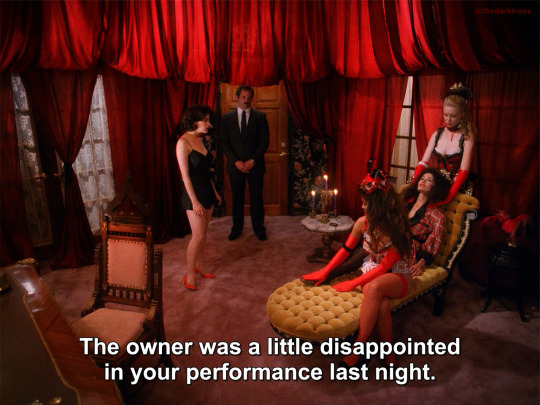


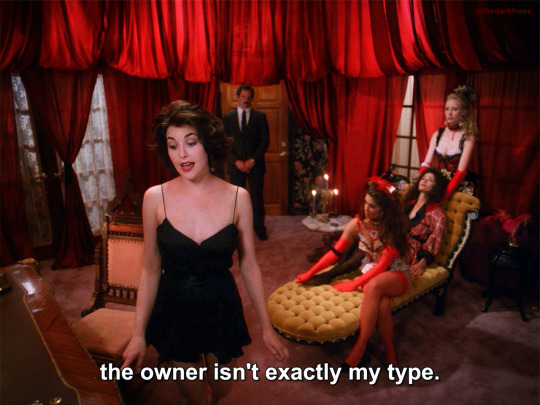

Sherilyn Fenn & Victoria Catlin | Twin Peaks
#twin peaks#audrey horne#sherilyn fenn#david lynch#twinpeaksedit#blackie#victoria catlin#special agent audrey horne#one eyed jack's#twinpeaks
434 notes
·
View notes
Text


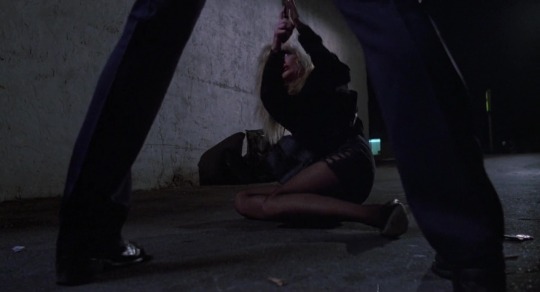
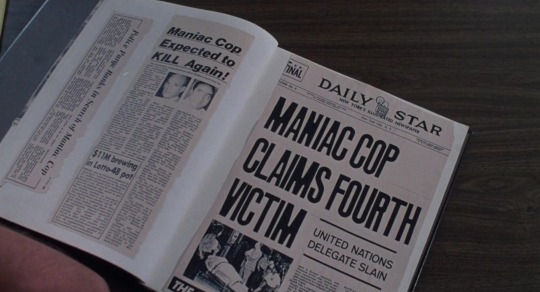






Maniac Cop (1988)
Director - William Lustig, Cinematography - James Lemmo
"Whole city's goin' to hell. You can't take a pee anywhere anymore."
#scenesandscreens#william smith#Nina Arvesen#sheree north#Victoria Catlin#Ken Lerner#bruce campbell#tom atkins#robert z'dar#laurene landon#richard roundtree#maniac cop#william lustig#James Lemmo#Vincent J. Rabe
27 notes
·
View notes
Photo

A study of Blackie “Black Rose” O'Reilly, whose given name--according to the internet--apparently IS actually "Blackie", which surprised me.
Ink, 8 x 8 inches
JoJo Seames, 2020
#twin peaks#blackie o'reilly#black rose#victoria catlin#art#illustration#ink#drawing#portrait#caricature#jojo seames
17 notes
·
View notes
Photo

Ghoulies - Luca Bercovici 1984
8 notes
·
View notes
Text
“Saw men dressed like women; Balboa learnt that they were sodomites and threw the king and forty others to be eaten by his dogs, a fine action of an honourable and Catholic Spaniard.”
–Antonio de la Calancha, a Spanish official in Lima, Peru (1610)
“This is one of the most unaccountable and disgusting customs, that I have ever met in the Indian country, and so far as I have been able to learn, belongs only to the Sioux and Sacs and Foxes—perhaps it is practiced by other tribes, but I did not meet with it; and for further account of it I am constrained to refer the reader to the country where it is practiced, and where I should wish that it might be extinguished before it be more fully recorded.”
–George Catlin on his painting, Dance to the Berdache (1830)
“Strange country, this, where males assume the dress and perform the duties of females, while women turn men and mate with their own sex!”
–Edwin Thompson Denig, American fur trader (1851)
“During a visit last year to the Crow reservation, in the interest of the Field Columbian Museum, I was informed that there were three hermaphrodites in the Crow tribe, one living at Pryor, one in the Big Horn district, and one in Black Lodge district. These persons are usually spoken of as “she”… and they are highly regarded for their many charitable acts… A few year ago an Indian agent endeavoured to compel these people, under threat of punishment, to wear men’s clothing, but his efforts were unsuccessful.”
–S. C. Simms, American Anthropologist (1903)
“The Indian agent wrote to Victoria [the provincial government], telling the officials what she was doing. She was taken to Victoria, and the policeman took her clothes off and found she was a man, so they gave him a suit of clothes and cut off his hair and sent him back home. When I saw him again, he was a man. He was no more my sweetheart.”
–Anonymous Kwakiutl chief (1900)
“The agent incarcerated the Badés, cut off their hair, made them wear men’s clothing. He forced them to do manual labour, planting these trees that you see here on the B.I.A. [Bureau of Indian Affairs] grounds. The people were so upset with this that Chief Pretty Eagle came into Crow agency and told the agent to leave the reservation. It was a tragedy, trying to change them.”
–Joe Medicine Crow, historian (1982)
There are important cultural and spiritual aspects to identifying as Two-Spirit. Many Two-Spirit peoples traditionally held and hold important roles within the community. A Native lens is needed for a full understanding, and as such, Two-Spirit is not an identity for Non-Natives to use. People who want to call themselves Two-Spirit because they think it sounds cool have no idea how rude that is on many levels, especially given the centuries Two-Spirit peoples have spent in fear of being punished for being themselves from settlers.
Significant efforts were made by colonizers to destroy these views and traditions. Variance in their strict gender roles were not tolerated, and punishment ranged from death to incarceration. These are just some records of the views from settlers and violence Two-Spirit peoples were subjected to. All this led to Two-Spirit identities going underground.
973 notes
·
View notes
Text
Breathe out
Having sat down with Ace in the station, describing everything she could remember, doing her best to describe the pictures in her mind, Victoria had left the station in fear though. Fear they’d retaliate before the cops could get them. Retaliate before Dante could teach her to fight back. Try to get her before she had a bat to slam into their skulls. She’d left there, with her heart in her throat, and fear on her shoulders. Had she’d seen her in the street? Had the blonde witch seen her? She... She couldn’t tell. She didn’t know. She’d been sent back home, well... Her temporary home. Surrounded by werewolves. Surrounded by the only ones who’d cared to care about her. The only ones who’d cared to take care of her during all of this.
She’d sat on her bed when the information came out. When they found out that the crooks had been taken. And she’d been unsure if she wanted to go see the execution. If she wanted to look them in the eye, and know that she was still standing. That even though they’d tried to end her, she’d stood strong, stood with her head raised, and survived. That they’d tried to kill her twice. In the Estrella attack, and the hospital. That they tried, but failed. they’d killed people. People she cared about in smaller or lesser degrees. Like Aleksander Serafin. Even if she wasn’t best friends with him, she loved his brother like family. She adored his brother, and his pain was hers in many ways.
So she had to do this. She had to go. Taking a white suit out of her closet, she made sure it was flawless. Not a wrinkle to see. Paired up with a black shirt and a red tie. Lips cherry red, and eyes framed in with a catliner. Her hair curled, and used to perfectly frame in her face like a photo. She was going to show up. Show that no matter what people tried, no matter how hard it was attempted, she couldn’t be killed. Not by them, not until she was ready to give up. Not until she was done. For Aleksander and Leon. For Ryder Moore the firefighter. For Ella Josephine, and all the rest who didn’t survive the bombing. For her friends. Her loved ones in Estrella. For herself.
Watching had been excruciating. Watching the pain, the torture they were put through. She’d wanted to run out, run away, to flee it all. Yet, she remained there. Her head held high. Her hands having to suffer her own suffering, nails digging into the soft flesh of her palms, but that could be fixed. That... she probably knew a spell if she thought hard about it, or could buy a cream on the way home. But she wouldn’t look away. For Aleksander and Leon. For Ryder Moore the firefighter. For Ella Josephine, and all the rest who didn’t survive the bombing. For her friends. Her loved ones in Estrella. For herself. She couldn’t look away. She couldn’t let herself falter. She needed to be strong for them.
Once it was all over, and they were dead, when there no longer was anyone to watch, Victoria turned on her heel and began walking out. The tears were pressing on behind her eyes, threatening with spilling over as she marched out. Ignoring any whispers, or talks she could hear. She wanted to get back home to her wolves. Get back home with the only people who cared about her. Not once had the witches reached out to her. Not once had they tried to call, to just pick up the phone and ask her if she was doing fine. She didn’t need them.
She didn’t need anyone who didn’t want her when she needed support. When she needed help. When she was lost and confused. When she was terrified. When she couldn’t even sleep without being a danger to herself. But they hadn’t cared. they hadn’t wanted her. So she didn’t care to linger. To let anyone who might think they were oh so big and kind, think that for a second they were good to her.
Walking into the Vasilyev mansion, the tears finally got to start running. Run down her cheeks, and from her cheeks to her neck. Finally. She was free, finally. Their power, their retaliation, it couldn’t happen. They wouldn’t happen. She was free. She was finally free from them. She could finally be her own person with a life, without a fear for every step she took.
--- @bxdybcg
A while later, after fixing her face, replacing the high heels with ballerina flats for her feet to relax, and the makeup mostly gone, she finally felt like she could breathe. With careful steps she began to make her way through the mansion until she found Daria. “They’re gone.” She said quietly, unable to help the little smile on her face. “They’re gone. They... Oh god they should have gotten so much worse for all they put us through, but they’re gone. They’re finally gone.”
9 notes
·
View notes
Text
“Saw men dressed like women; Balboa learnt that they were sodomites and threw the king and forty others to be eaten by his dogs, a fine action of an honourable and Catholic Spaniard.”
–Antonio de la Calancha, a Spanish official in Lima, Peru (1610)
“This is one of the most unaccountable and disgusting customs, that I have ever met in the Indian country, and so far as I have been able to learn, belongs only to the Sioux and Sacs and Foxes—perhaps it is practiced by other tribes, but I did not meet with it; and for further account of it I am constrained to refer the reader to the country where it is practiced, and where I should wish that it might be extinguished before it be more fully recorded.”
–George Catlin on his painting, Dance to the Berdache (1830)
“Strange country, this, where males assume the dress and perform the duties of females, while women turn men and mate with their own sex!”
–Edwin Thompson Denig, American fur trader (1851)
“During a visit last year to the Crow reservation, in the interest of the Field Columbian Museum, I was informed that there were three hermaphrodites in the Crow tribe, one living at Pryor, one in the Big Horn district, and one in Black Lodge district. These persons are usually spoken of as “she”… and they are highly regarded for their many charitable acts… A few year ago an Indian agent endeavoured to compel these people, under threat of punishment, to wear men’s clothing, but his efforts were unsuccessful.”
–S. C. Simms, American Anthropologist (1903)
“The Indian agent wrote to Victoria [the provincial government], telling the officials what she was doing. She was taken to Victoria, and the policeman took her clothes off and found she was a man, so they gave him a suit of clothes and cut off his hair and sent him back home. When I saw him again, he was a man. He was no more my sweetheart.”
–Anonymous Kwakiutl chief (1900)
“The agent incarcerated the Badés, cut off their hair, made them wear men’s clothing. He forced them to do manual labour, planting these trees that you see here on the B.I.A. [Bureau of Indian Affairs] grounds. The people were so upset with this that Chief Pretty Eagle came into Crow agency and told the agent to leave the reservation. It was a tragedy, trying to change them.”
–Joe Medicine Crow, historian (1982)
38 notes
·
View notes
Text
Maniac Cop (1988) – Episode 163 – Decades of Horror 1980s
"Look at the size of those hematomas!" Do we have to? Join your faithful Grue Crew - Bill Mulligan, Chad Hunt, Crystal Cleveland, and Jeff Mohr - as they visit the land of chins in Maniac Cop (1988).
Decades of Horror 1980s
Episode 163 – Maniac Cop (1988)
A killer dressed in a police uniform begins murdering innocent people on the streets of New York City.
IMDb
Director: William Lustig
Writer: Larry Cohen
Music: Jay Chattaway
Special effects makeup assistant: Brad Look (as Bradley Look)
Cast
Bruce Campbell as Officer Jack W. Forrest, Jr.
Tom Atkins as Detective Lieutenant Frank McCrae
Laurene Landon as Officer Theresa Mallory
Robert Z'Dar as Officer Matthew Cordell/Maniac Cop
Richard Roundtree as Commissioner Pike
William Smith as Captain Ripley
Victoria Catlin as Ellen Forrest
Sheree North as Officer Sally Noland
Nina Arvesen as Regina Sheperd
William Lustig as the Motel Manager (uncredited)
Sam Raimi as the News Reporter (uncredited)
Jake LaMotta as the Detective (uncredited)
Your 1980s Grue-Crew bravely tackles the first film in director William Lustig’s and writer Larry Cohen's Maniac Cop franchise despite the constant danger from being hit by swinging chins. Robert Z’Dar and Bruce Campbell are the main offenders but William Smith is no slouch in the chin category either. In fact, one of the film's biggest assets is its cast. Bill keeps trying to figure out what makes the titular character so hard to kill while Crystal digs Laurene Landon’s performance and her 80s hairdo. Tom Atkins is the main attraction for Chad while Jeff gets lost in all the cameos.
Currently, all three films in the Maniac Cop franchise are available for streaming on Shudder and on Blu-ray: Maniac Cop from Synapse Films, and Maniac Cop 2 and Maniac Cop 3: Badge of Silence from Blue Underground.
Every two weeks, Gruesome Magazine’s Decades of Horror 1980s podcast will cover another horror film from the 1980s. The next episode will be dedicated to Maniac (1980), the Crew’s second William Lustig film in a row.
Please let them know how they’re doing! They want to hear from you – the coolest, grooviest fans: leave them a message or leave a comment on the site or email the Decades of Horror 1980s podcast hosts at [email protected]
Check out this episode!
1 note
·
View note
